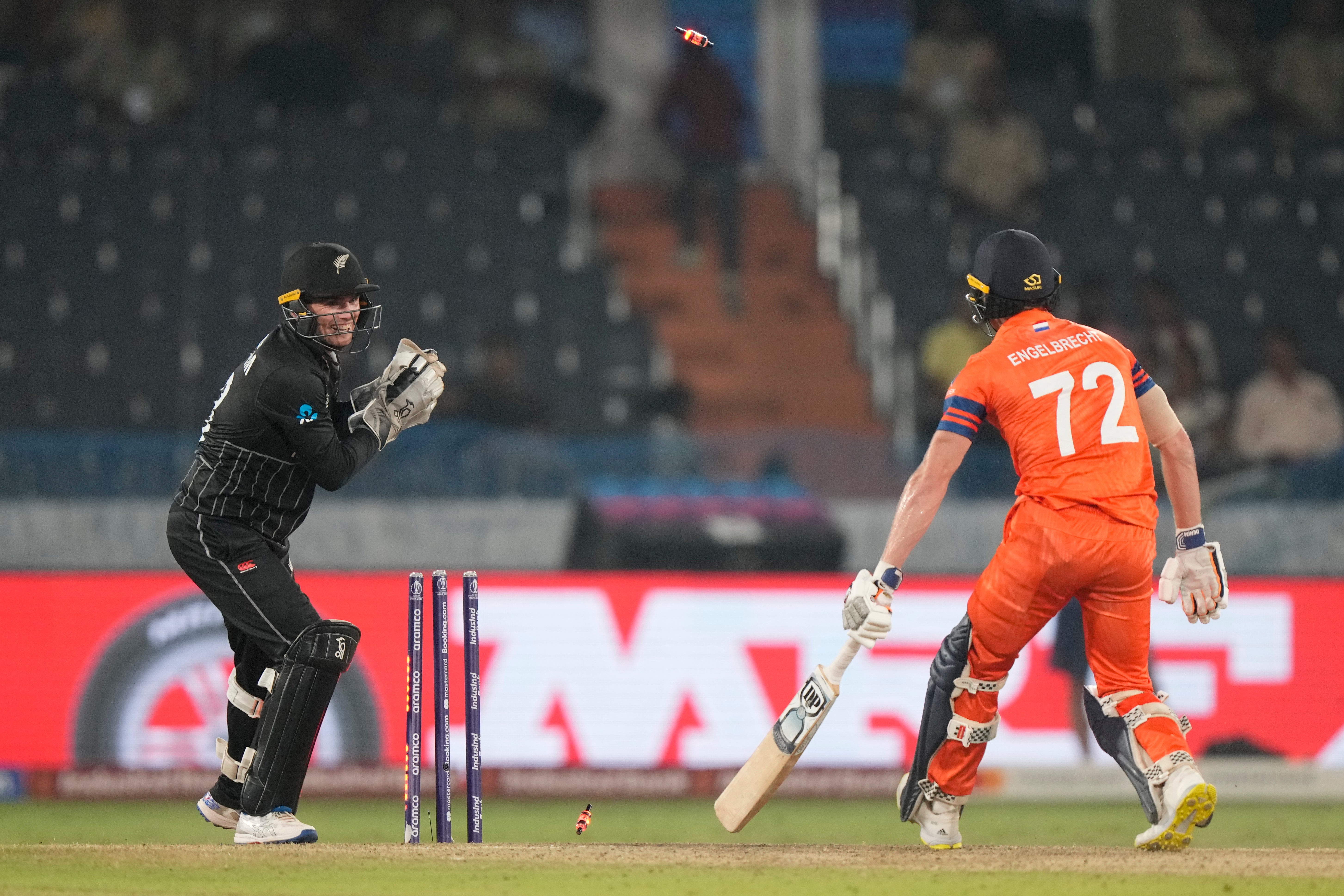World Cup TV umpire controversially reverses New Zealand stumping decision: ‘Just crazy’
‘I’ve got to say, as a former keeper, that’s the most bizarre thing I’ve ever seen’ says legendary Kiwi player Ian Smith

Your support helps us to tell the story
From reproductive rights to climate change to Big Tech, The Independent is on the ground when the story is developing. Whether it's investigating the financials of Elon Musk's pro-Trump PAC or producing our latest documentary, 'The A Word', which shines a light on the American women fighting for reproductive rights, we know how important it is to parse out the facts from the messaging.
At such a critical moment in US history, we need reporters on the ground. Your donation allows us to keep sending journalists to speak to both sides of the story.
The Independent is trusted by Americans across the entire political spectrum. And unlike many other quality news outlets, we choose not to lock Americans out of our reporting and analysis with paywalls. We believe quality journalism should be available to everyone, paid for by those who can afford it.
Your support makes all the difference.New Zealand’s victory over Netherlands at the ICC Cricket World Cup 2023 was struck by a bizarre controversy, with an irked Ian Smith calling a third umpire’s decision “crazy”.
The Netherlands’ Sybrand Engelbrecht was initially declared stumped out by Kiwi wicketkeeper Tom Latham off a wide delivery from Rachin Ravindra in the 41st over of the second innings in the match in Hyderabad on Monday.
New Zealand subsequently claimed a 99-run win.
As the on-field umpires did not refer it to the TV umpire, the Dutch batsman began to quickly walk back. When Engelbrecht almost reached the boundary, he was asked to stop and was told that TV umpire Joel Wilson was having another look at his dismissal.
Wilson wanted to make sure if Latham had taken the ball in front of the stumps or had his gloves in front of the wicket before producing the stumping.
The replays showed the Black Caps keeper was very close to taking the ball, with his gloves right in front of the stumps which would account for it as a no-ball. The third umpire eventually decided to overturn Engelbrecht’s dismissal.
“Yes, he’s not wholly behind the stumps, so I have a no-ball, I have a no-ball – the batter will be not out,” Wilson said before asking on-field umpire Paul Reiffel to “Take it back – it looked like he collected the ball in front of the stumps”.
The decision of overturning the stumping did not go well with Ian Smith, New Zealand’s legendary former wicketkeeper who was one of the commentators for the Hyderabad match, heard saying “You are kidding”.
“Well, I’ve got to say, as a former keeper, that’s the most bizarre thing I’ve ever seen,” said Smith, who rose to fame as a wicketkeeper-batter for the Kiwis in the 1980s before becoming a sports commentator.
“That is just crazy... they might have been initially in front but when the ball went into his gloves, they were clearly, clearly behind the stumps.
“It’s becoming like rugby union – officials can’t stay out of it,” he said.
The laws of the game, however, explain why Wilson may have made the decision.
“The wicket-keeper shall remain wholly behind the wicket at the striker’s end from the moment the ball comes into play until a ball delivered by the bowler touches the bat or person of the striker or passes the wicket at the striker’s end or the striker attempts a run,” states a clause of the wicket-keeper law known as Law 27.3.1.
“In the event of the wicket-keeper contravening this Law, the striker’s end umpire shall call and signal No ball as soon as applicable after the delivery of the ball,” states the other clause, Law 27.3.2.
Former New Zealand cricketer Smith read out part of the laws after his initial reaction and then said: “Make what you want of that then.”
This decision against New Zealand mattered little in the end, with Latham’s side crossing the line with ease.
With two back-to-back wins, New Zealand have started their Cricket World Cup campaign on a high.
They will next take on Bangladesh on 13 October at the MA Chidambaram Stadium in Chennai. The Netherlands, meanwhile, have a week’s gap before their next fixture on 17 October against South Africa in Dharamshala.



Join our commenting forum
Join thought-provoking conversations, follow other Independent readers and see their replies
Comments